Element D: Design Concepts, Analysis, & Selection
Introduction
Every team member first brainstormed 3 designs of our future device that would fulfill design requirements, while effectively combining previous solutions advantages and solving some of their problems. Members proposed top-2 of their solutions to the team consideration. After creating the Individual Decision Matrix (see below), everyone individually rated designs based on the criteria. By finding the highest total score and highest scores in the most important criteria (such as expected connection range and adherence to design specifications), we found our final design (see below for details).
Solution Brainstorm





Individual Decision Matrices
Every team member had independently completed the Decision Matrix shown on the left, rating how well certain designs had implemented or fulfilled design requirements (see Element C: Justification of Solution Design Requiremenets for more details).
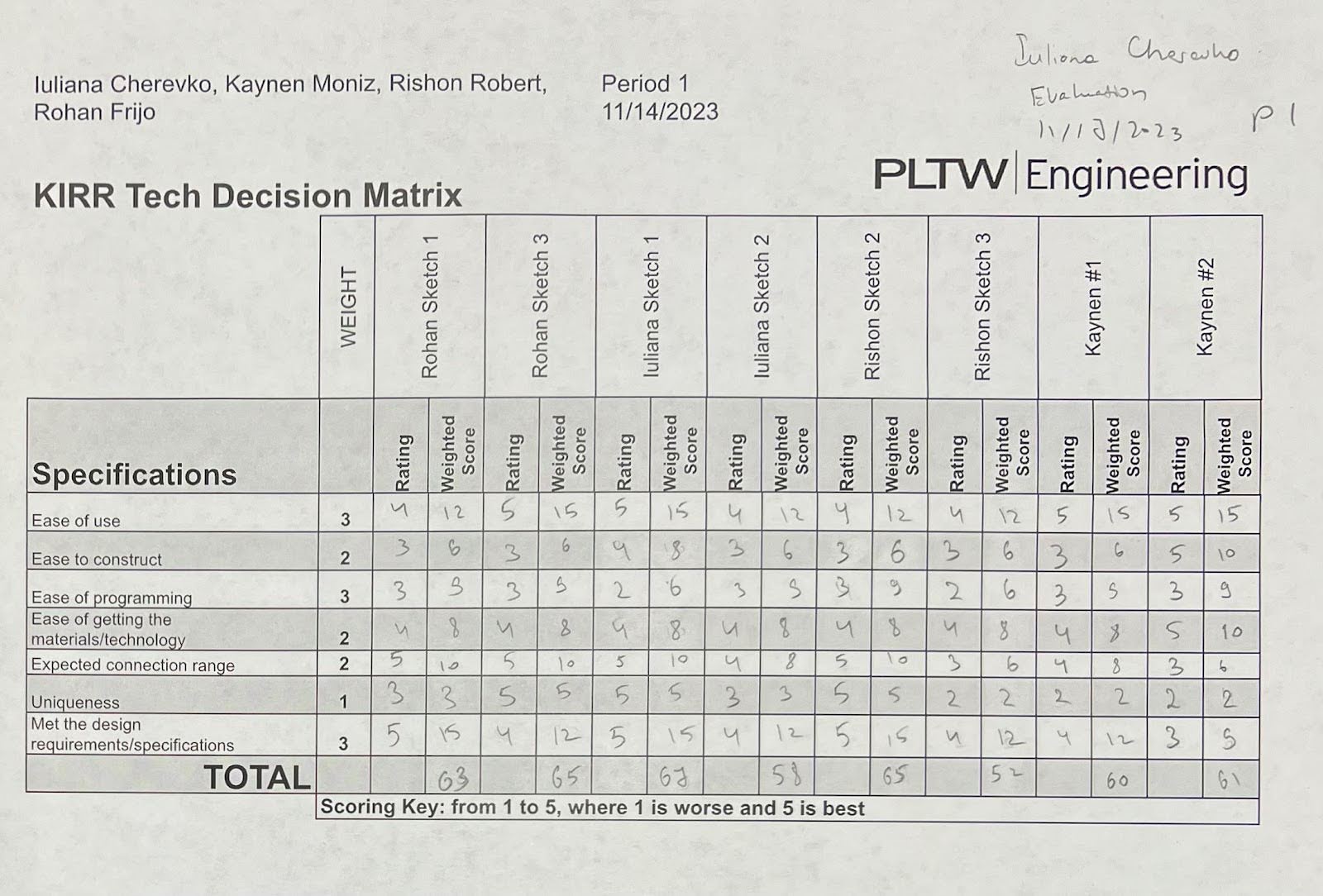
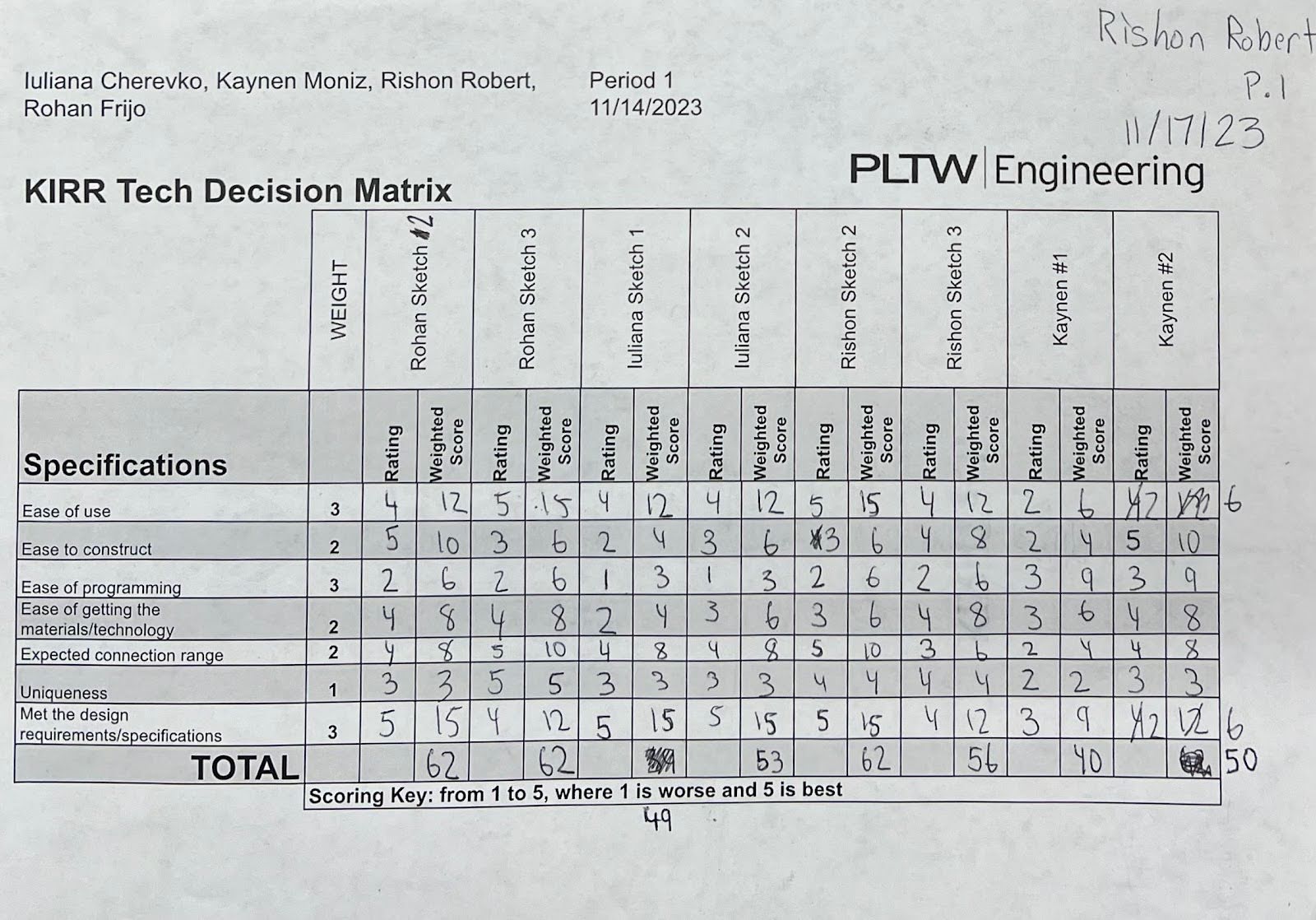
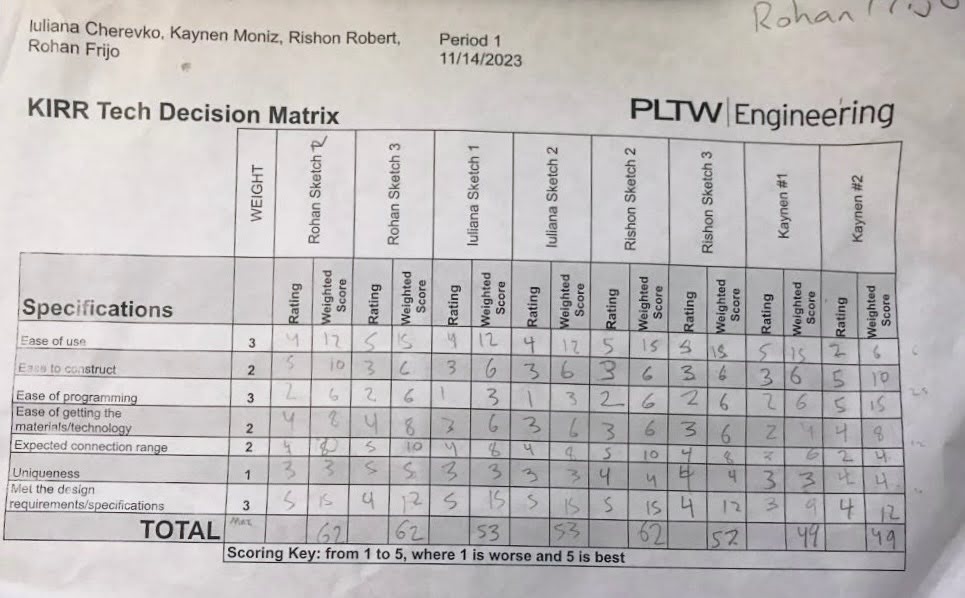
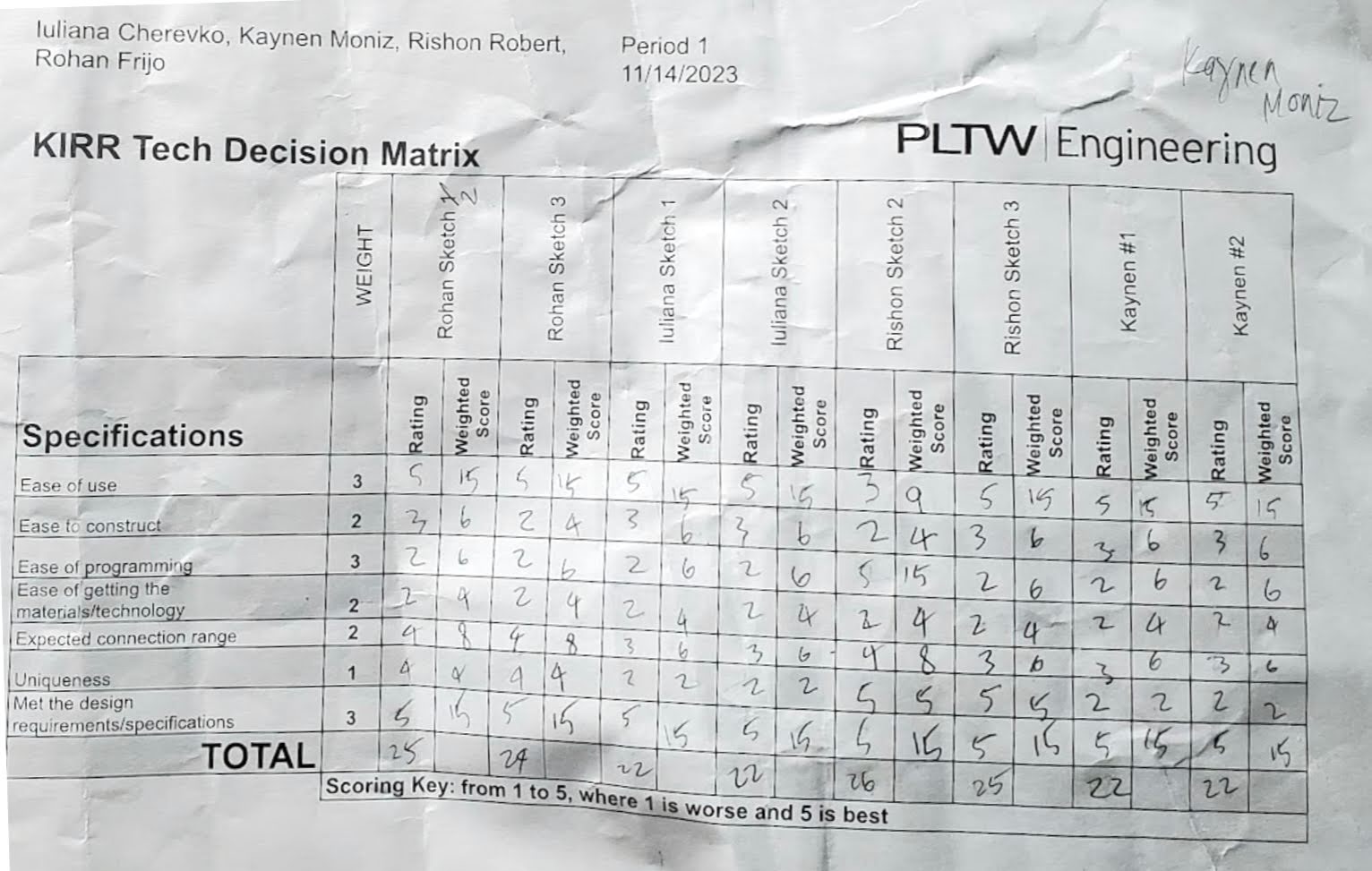
Final Decision Matrix
Then, we summed up the total scores for each design from an individual matrix and selecting the one with the highest score.
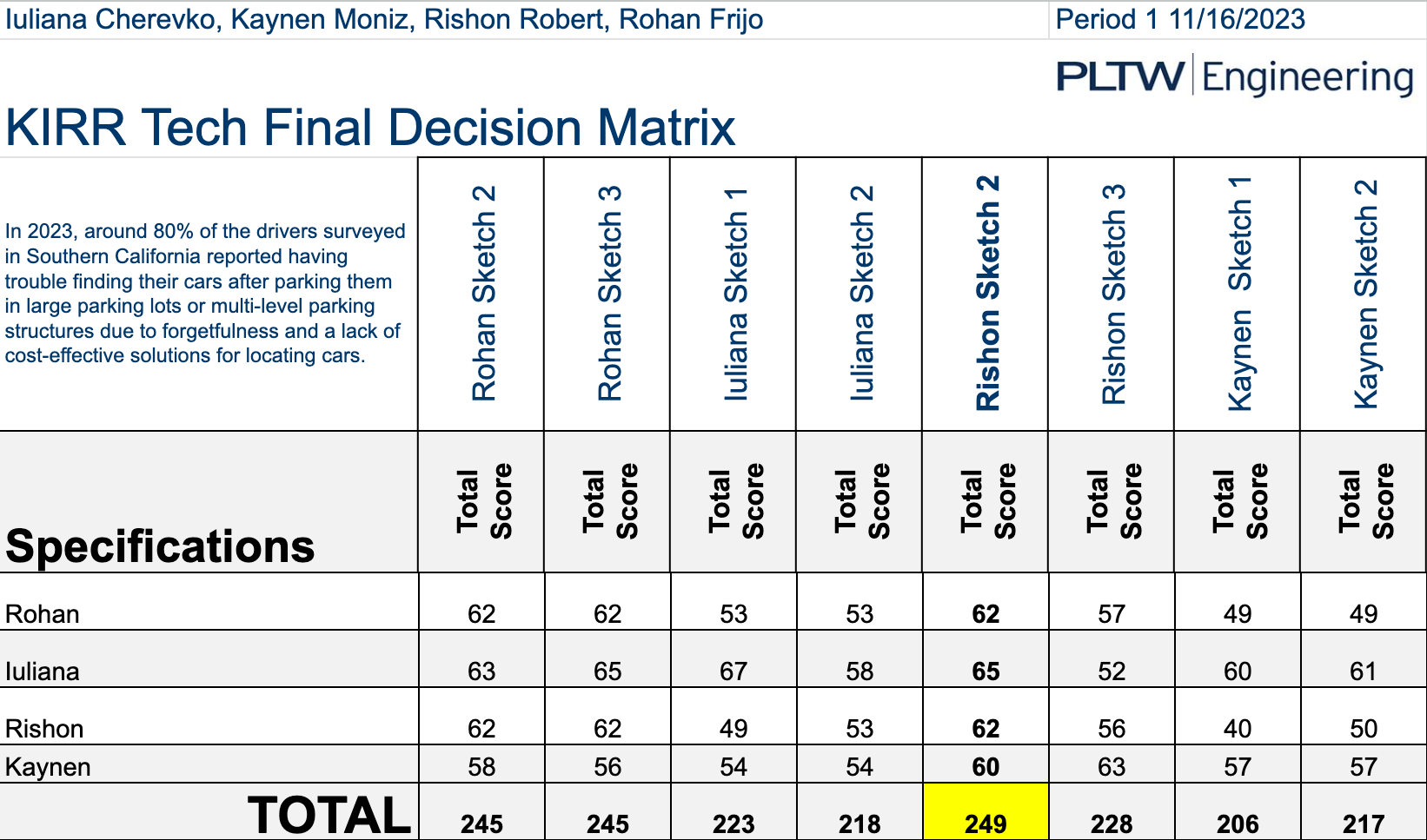
Technical Drawing of Final Design
We choose Rishon's second sketch, featuring a device plugged into the car's UB-II port, a mobile app with a map, and the use of satellite to connect the device and smartphone, ensuring that the user can efficiently navigate to the car. This design scored the highest total score among all eight concepts. Additionally, based on individual matrices, it had top scores for uniqueness and ease of use. Most importantly, this concept seems to be one of the best designs regarding expected connection range and adherence to design specifications, which are crucial for our future device.

CAD Model of the Final Design

